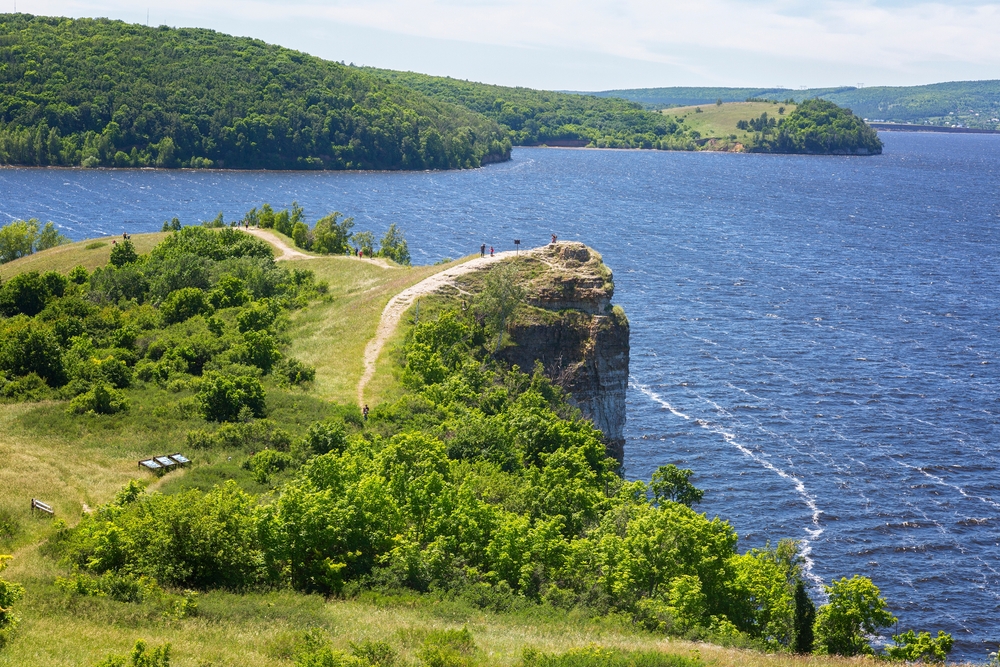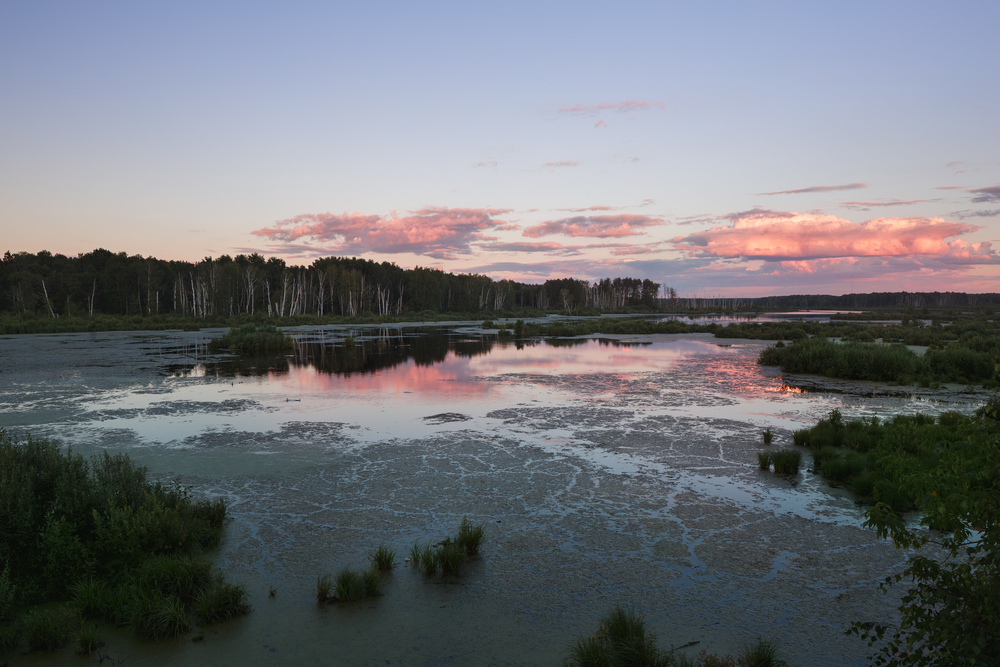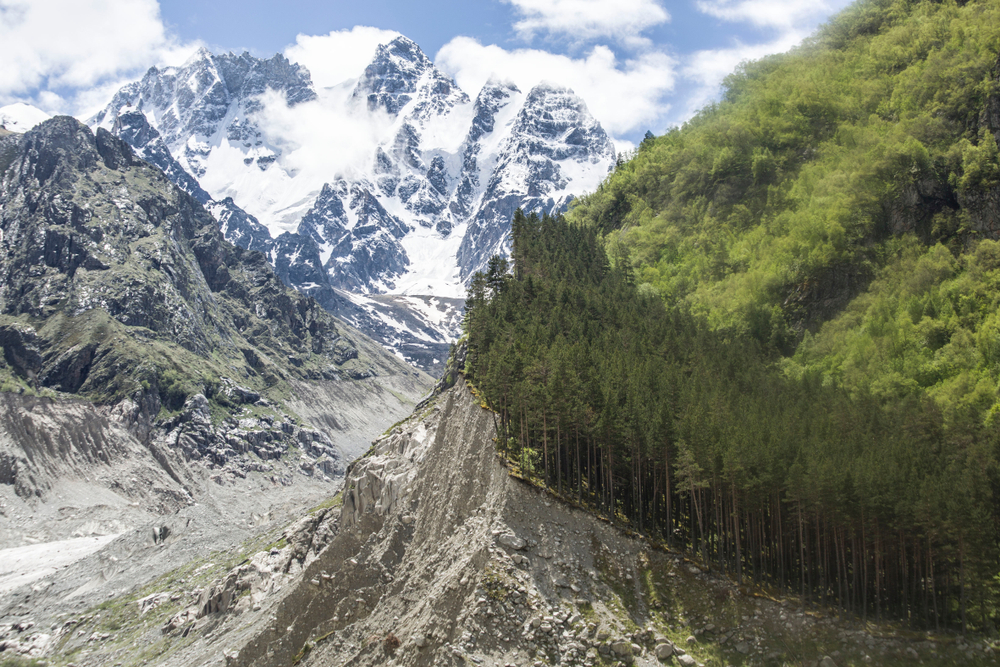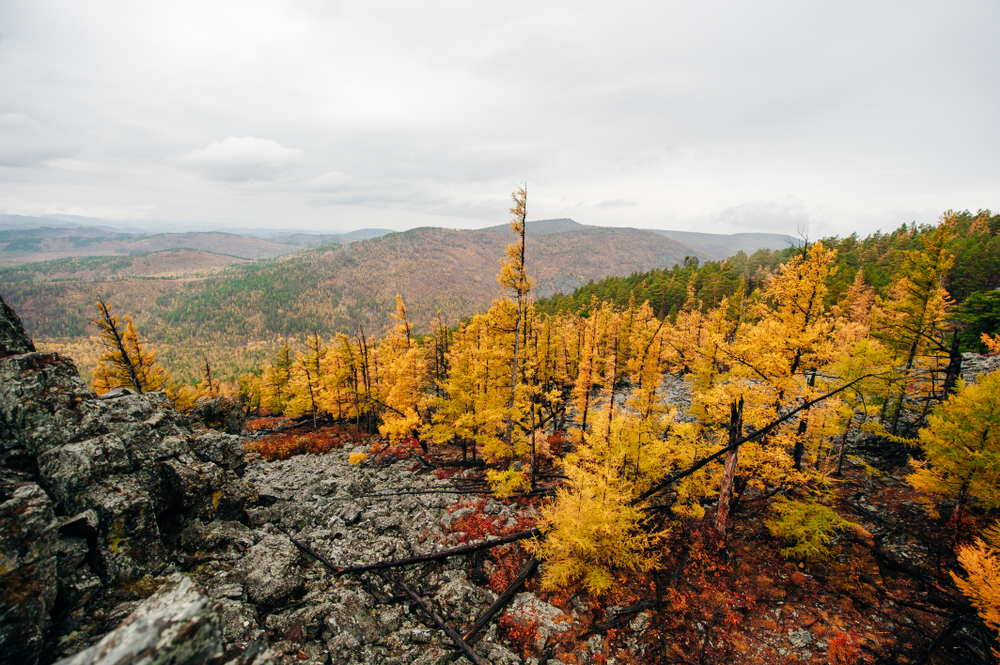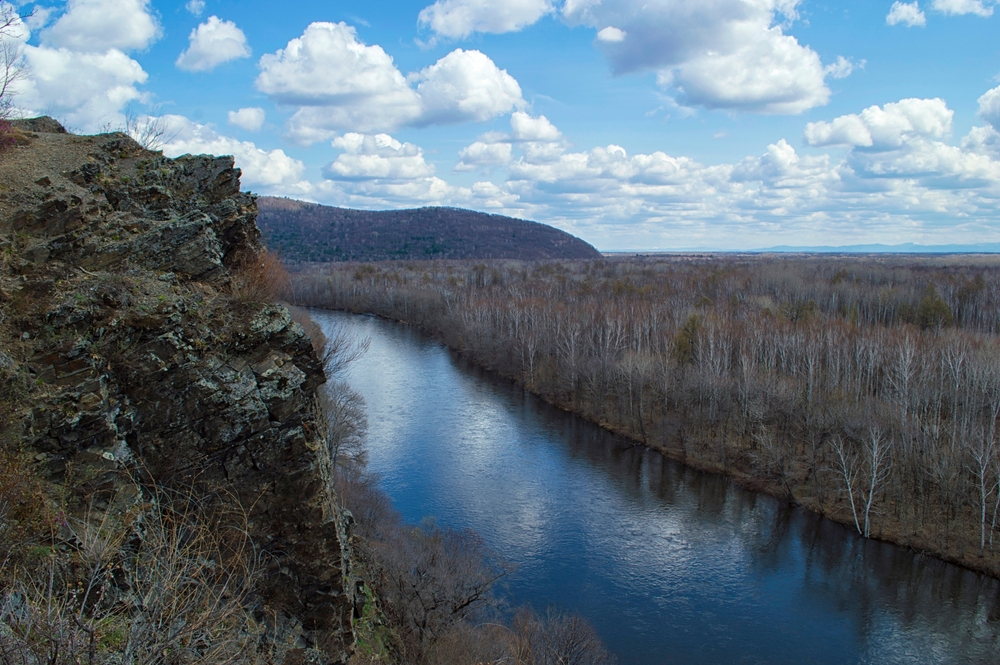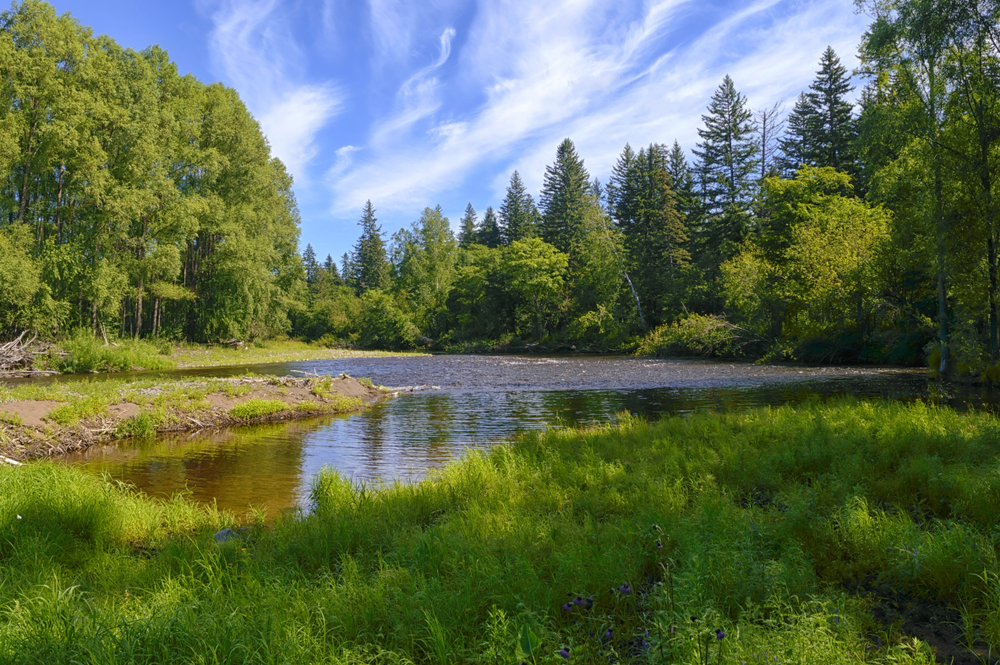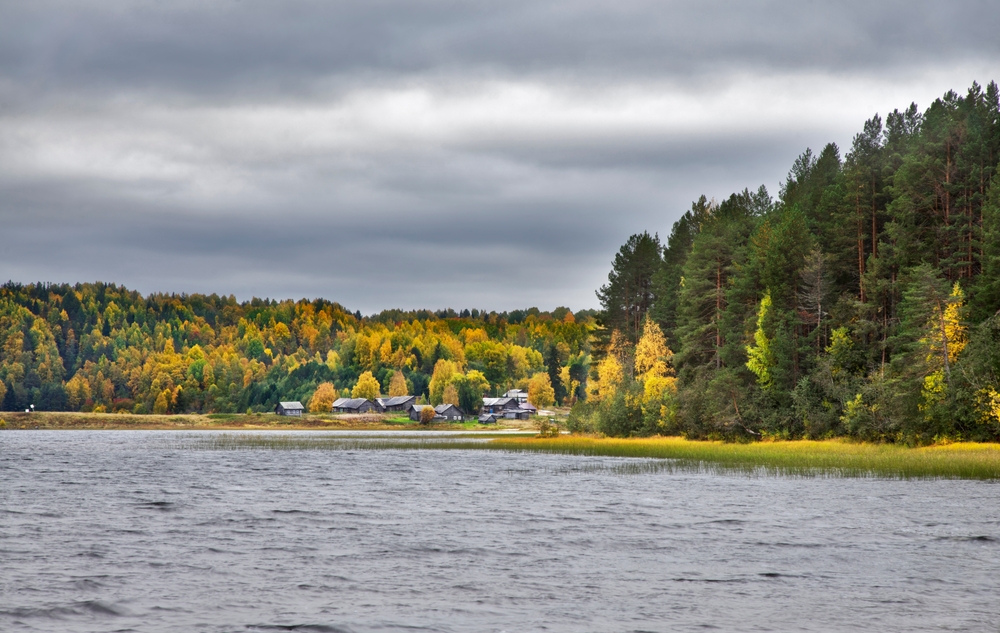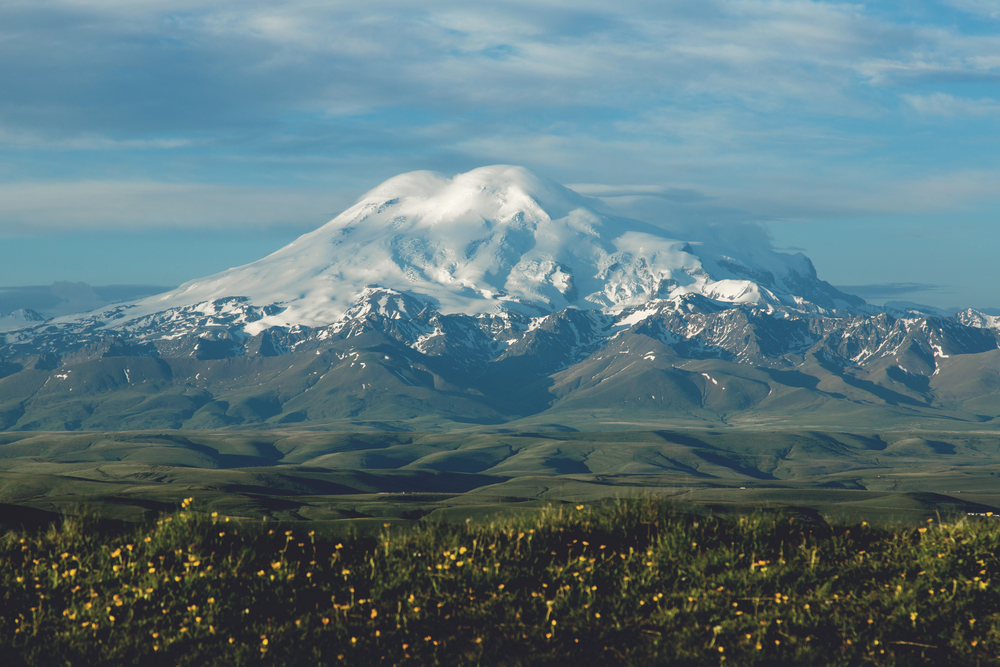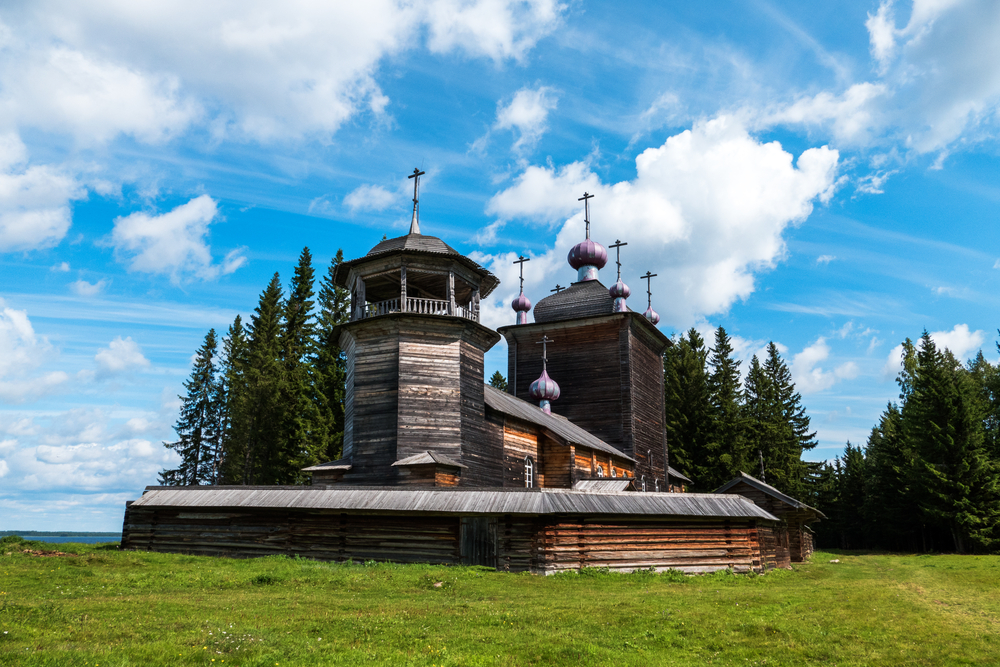Samarskaya Luka Overview
Samarskaya Luka National Park, located in the Samara Oblast of Russia, spans approximately 521 square miles (1,350 square kilometers) and is uniquely shaped by the Volga River’s great bend.
This park is famous for its striking landscapes, which include rolling hills, dense forests, and the iconic Zhiguli Mountains, whose rugged limestone formations rise above the river. The terrain is diverse, featuring steep cliffs, deep ravines, and lush valleys. The Volga, one of Europe’s longest rivers, winds around the park, creating a picturesque setting with many inlets, islands, and meadows that contribute to the park’s ecological richness.
The vegetation varies from broadleaf forests dominated by oak, maple, and linden trees to dry grasslands and steppe areas, where wildflowers bloom in vibrant displays during warmer months. The region’s unique microclimate fosters a mix of flora, including rare and endemic plant species that are found nowhere else in Russia.
The park is home to an impressive variety of wildlife, making it an excellent destination for nature lovers. Among the notable mammals inhabiting Samarskaya Luka are wild boars, red foxes, European badgers, and roe deer. More elusive species, such as the Eurasian lynx and brown bear, also roam the forests but are rarely spotted by visitors.
Birdwatchers can find a rich avian population, including majestic birds of prey like golden eagles and peregrine falcons, alongside smaller songbirds such as the Eurasian blue tit and great spotted woodpecker. Wetland areas along the Volga River support herons, ducks, and swans, making for dynamic birdwatching opportunities. The park’s biodiversity is enhanced by its mixture of habitats, from dense woodlands to open meadows and riverbanks.
One of the park’s most famous natural landmarks is the Molodetsky Kurgan, a striking hill offering panoramic views of the Volga and the surrounding landscape. Another must-visit site is the Stone Bowl, a series of natural rock formations and springs considered sacred in local folklore.
The park is also home to the historical village of Shiryaevo, once a retreat for Russian artists and poets, including the renowned painter Ilya Repin. The region’s cultural and historical significance adds depth to its natural beauty, making it a compelling destination for history and nature enthusiasts alike.
Visitors can engage with the park in multiple ways, from hiking and mountain biking through its scenic trails to boat excursions on the Volga River, offering a unique perspective of the landscape.
Wildlife watching, photography, and camping are popular activities, while the park also hosts educational tours that explore its geology, flora, and cultural history. Seasonal activities such as cross-country skiing and ice fishing are available in the winter, making it a year-round destination. The park is also a favorite spot for eco-tourism, drawing visitors interested in conservation and sustainable travel.
Despite its rich biodiversity, Samarskaya Luka faces environmental challenges, including habitat degradation due to tourism, illegal hunting, and deforestation. Conservation efforts have focused on protecting endangered plant and animal species, managing visitor impact, and restoring natural habitats.
Recent successes include increased awareness and stricter regulations to preserve fragile ecosystems. The park’s management continues to balance conservation with recreation, ensuring that future generations can enjoy and appreciate its natural and cultural heritage.








































































